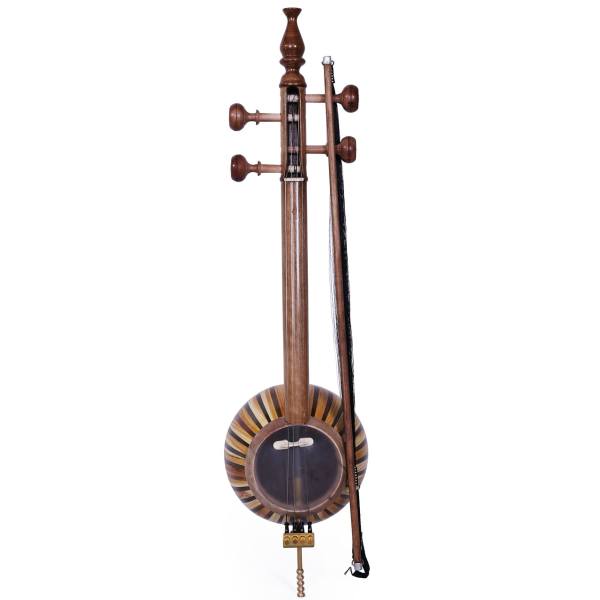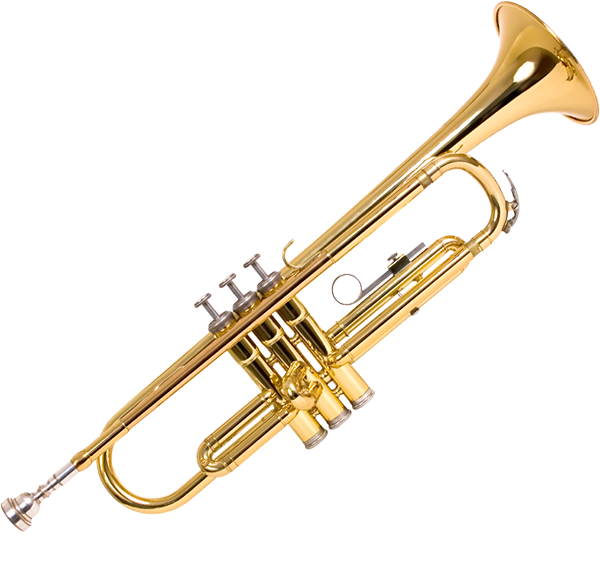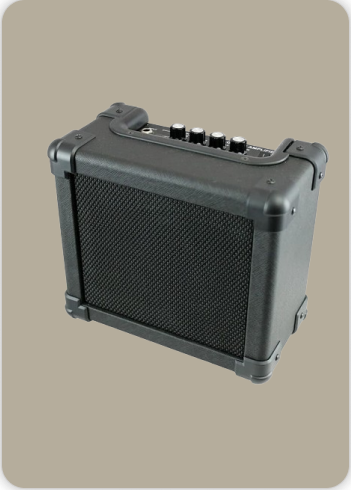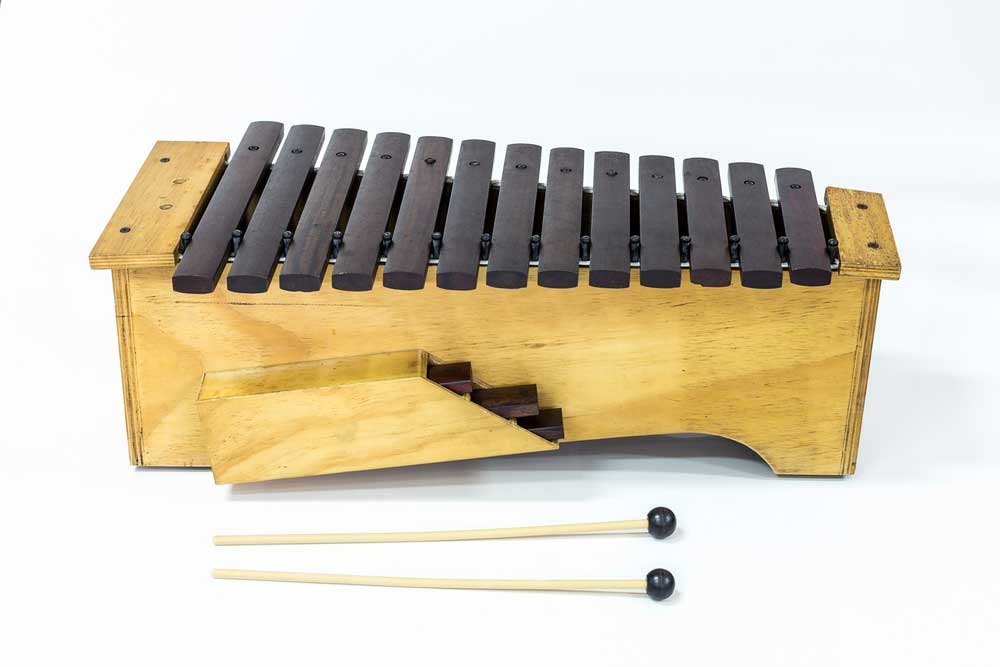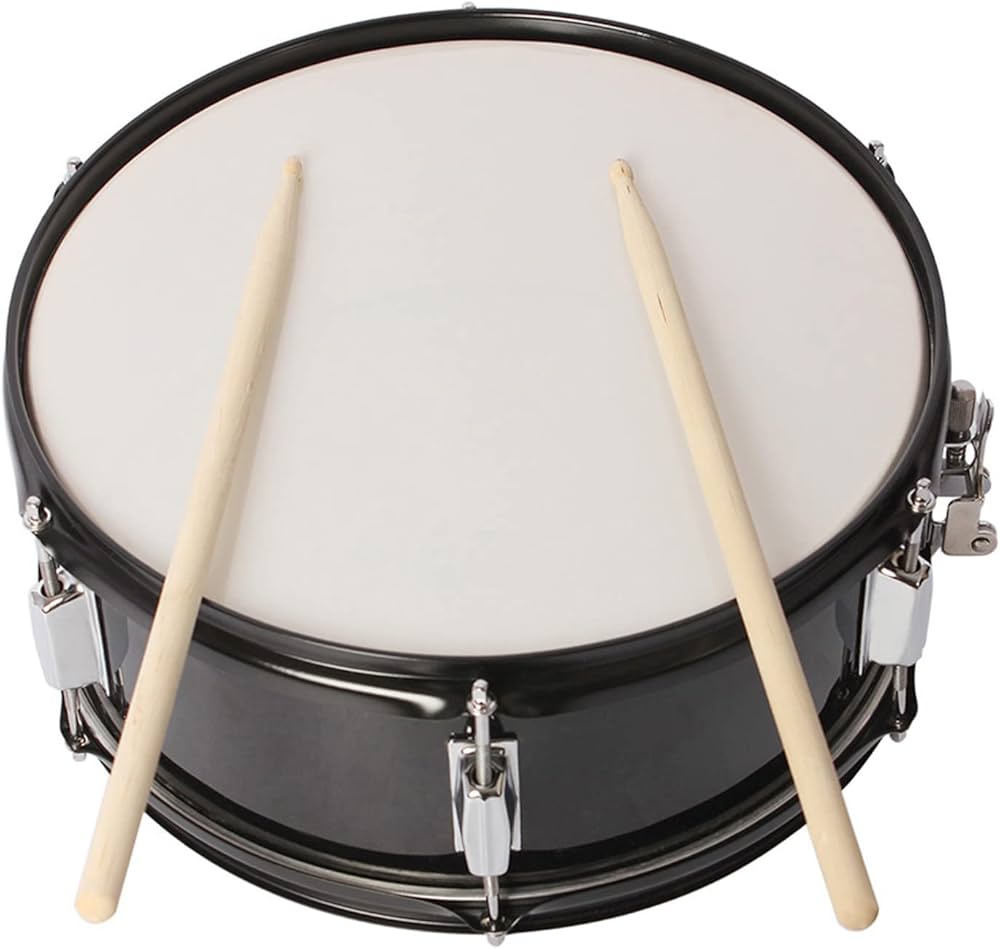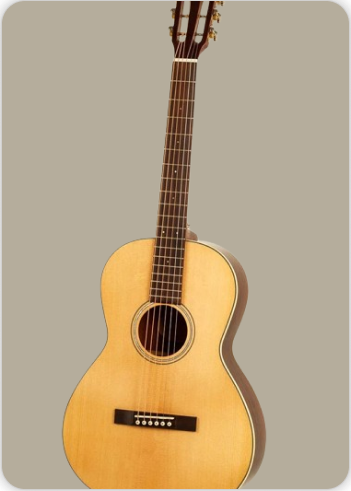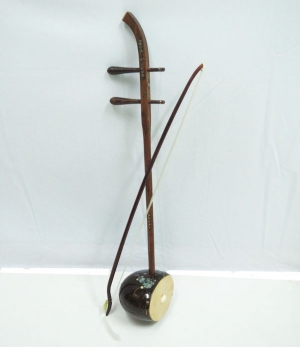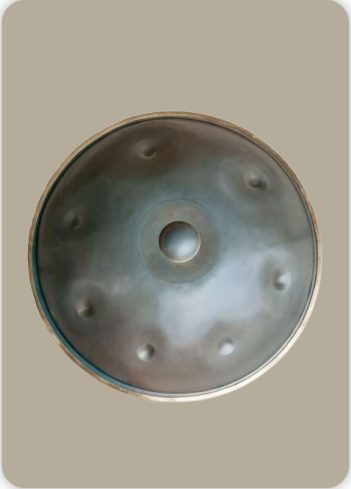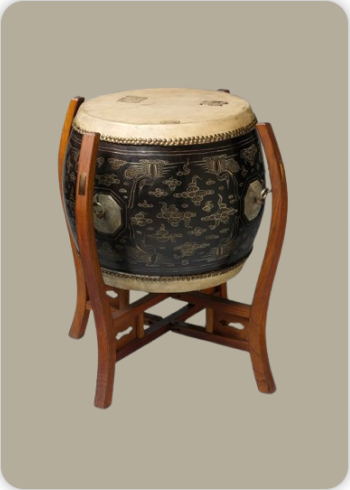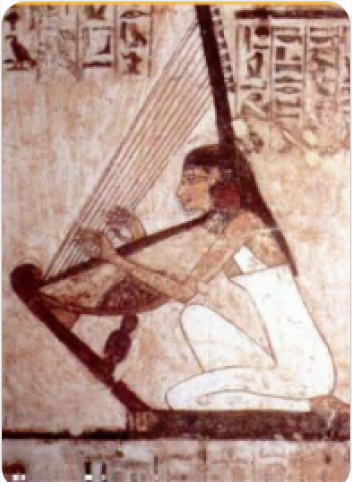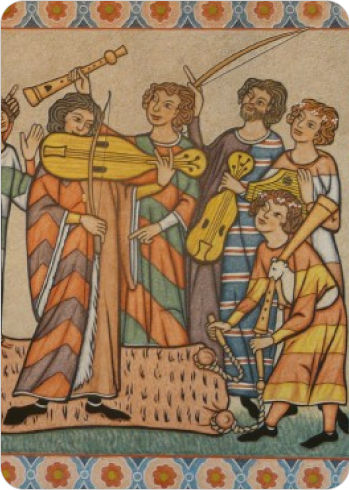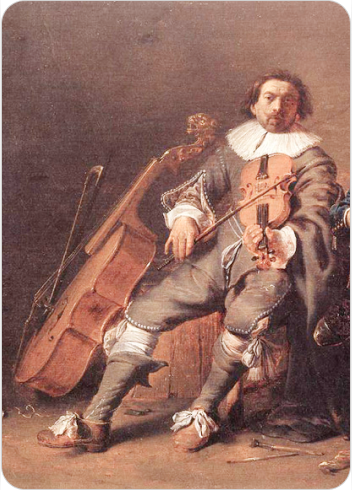Đàn gáo
Bowed Instruments
Asia
Between 1001 and 1900 AD
Video
The Đàn gáo is a traditional Vietnamese musical instrument that belongs to the family of stringed instruments. It is unique for its construction and sound, and it holds an important place in Vietnamese folk music, especially in the central and southern regions. The instrument is often featured in traditional performances, local ceremonies, and cultural celebrations, and its distinct tonal qualities make it a fascinating subject of study in the context of Vietnamese musical heritage.
Description and Features of the Đàn Gáo
The Đàn gáo, also known as the “gourd fiddle” or “gourd violin,” derives its name from its use of a gourd as the resonating body, similar to other traditional instruments in Southeast Asia, such as the sousaphone or xylophone in different regions. The gourd acts as an acoustic amplifier for the strings and helps produce a rich, earthy tone.
The instrument typically features a long, slender neck made from wood, with two or more strings stretched across it. These strings are traditionally made from silk, although modern versions may use nylon or metal. The gourd is hollowed out and attached to the neck, creating a resonating chamber that enhances the instrument’s volume and timbre. The Đàn gáo is played using a bow, which is traditionally crafted from horsehair or plant fibers. It is held like that of the violin, with the player drawing the bow across the strings to produce sound.
The Đàn gáo has a relatively simple structure, yet its sound is distinct and emotive, with the ability to produce both soft, melancholic melodies and lively, rhythmic tunes. The gourd body contributes to the instrument’s rich and resonant tone, which can carry over long distances, making it particularly suitable for outdoor performances or processions.
History and Origin of the Đàn Gáo
The exact origins of the Đàn gáo are not entirely clear, but it is believed to have evolved from earlier Southeast Asian stringed instruments, some of which also utilized gourds as resonating chambers. Similar instruments can be found in various cultures across Asia, particularly in countries like Cambodia, Laos, and Thailand. It is likely that the Đàn gáo has its roots in these regional traditions and was later adapted by the Vietnamese people.
The Đàn gáo is thought to have emerged in Vietnam sometime around the 17th century, during the period of the Nguyen Dynasty, when the arts and culture flourished. The instrument became especially popular in rural communities, where it was used for folk music, storytelling, and accompaniment to various local festivities and ceremonies.
Historically, the Đàn gáo was not widely used in formal or royal music settings, but it gained prominence in folk performances, particularly those in the southern and central regions of Vietnam. It became a key instrument in traditional musical genres such as cải lương, a type of Vietnamese folk opera, and đờn ca tài tử, a form of Southern Vietnamese classical music. These genres often feature stringed instruments like the Đàn gáo in their ensembles, and the instrument plays a crucial role in the overall texture and expressiveness of the music.
Working Mechanism of the Đàn Gáo
The Đàn gáo’s working mechanism is similar to other bowed string instruments, such as the violin or the đàn nhị, another Vietnamese instrument. The key components of the Đàn gáo are the gourd body, the wooden neck, and the strings. The gourd acts as a resonator, amplifying the sound produced by the vibrating strings. The strings are tuned by adjusting the tension using pegs, and the pitch can be altered by pressing the strings against the neck of the instrument.
The instrument is played with a bow that is drawn across the strings to create sound. The tension of the strings and the speed and pressure of the bowing technique determine the pitch and tone of the notes produced. The player can produce both long, sustained notes and short, staccato phrases, depending on the style of music being played. The Đàn gáo’s sound is noted for its warm, vibrant, and sometimes haunting qualities. The gourd body enhances the lower frequencies, giving the instrument a rich, mellow tone that contrasts with the higher-pitched sounds produced by the strings. Because of its tonal characteristics, the Đàn gáo is often used to create expressive and emotional music, with a focus on both melodic development and rhythmic accompaniment.
Types of Đàn Gáo
Though the Đàn gáo follows a general construction pattern, there are several variations of the instrument in different regions of Vietnam, each with slight differences in size, shape, or number of strings. The differences in design may influence the tonal quality or playing technique, but the basic structure remains the same across these variations.
- Đàn Gáo 2-String (Đàn Gáo Nhị): This version of the Đàn gáo features two strings, and it is the most common form of the instrument. The strings are usually tuned in intervals of fifths or fourths, similar to the tuning of the violin, and the player uses a bow to draw out melodies.
- Đàn Gáo 3-String (Đàn Gáo Tam): In some cases, a three-string version of the Đàn gáo is used, where the third string allows for greater harmonic possibilities and a more complex range of melodies. The additional string can provide a fuller sound and more options for chordal accompaniment.
- Regional Variations: Depending on the region, the shape and size of the gourd and neck may vary, which influences the tonal qualities of the instrument. Some Đàn gáo instruments may have more pronounced curves or a deeper body, which enhances the bass tones, while others may have a more delicate or slender design for a brighter sound.
Music and Performance with the Đàn Gáo
The Đàn gáo is predominantly used in traditional Vietnamese folk music, and its role in performances often depends on the musical genre being played. It is a key instrument in đờn ca tài tử, a classical music tradition from the southern region of Vietnam, where it serves as a primary melodic instrument, accompanied by other traditional instruments like the đàn tranh (zither) and đàn bầu (monochord). In these settings, the Đàn gáo adds a unique layer to the ensemble, contributing both melody and harmonic texture.
In cải lương, the Đàn gáo provides a rich background for vocal performances, often accompanying the singers during dramatic scenes or emotional moments in the performance. The instrument’s expressive, soulful tone helps to convey the sentiments of the singers, adding depth to the narrative and heightening the emotional intensity of the performance.
The Đàn gáo is also used in smaller, more intimate settings, such as village celebrations or family gatherings, where it is played for personal enjoyment or community bonding. Its warm, resonant tones are well-suited to these settings, creating an atmosphere of nostalgia and cultural pride.
Significance of the Đàn Gáo
The Đàn gáo holds significant cultural and historical value in Vietnam, as it embodies the ingenuity and resourcefulness of the people who created it. As a folk instrument, it is an important symbol of the Vietnamese people’s deep connection to their land and traditions. The use of the gourd as a resonator reflects the cultural importance of nature and the environment in Vietnamese musical practice.
Moreover, the Đàn gáo represents a link between Vietnam’s past and present. While the instrument is no longer as widely used in mainstream music, its cultural significance remains strong. Today, the Đàn gáo continues to be celebrated as part of the country’s rich musical heritage, and it is preserved through folk performances, music festivals, and educational programs aimed at keeping traditional music alive.
FAQ
What are the features of the Đàn gáo musical instrument?
The Đàn gáo is a traditional Vietnamese stringed instrument that features a unique design with a gourd body. It typically has two to four strings, which are plucked or bowed to produce sound. The instrument's body, made from a hollowed-out gourd, amplifies the vibrations of the strings, giving it a distinct resonant sound. The Đàn gáo is often played with a bow and is known for its high-pitched, bright tones, which are characteristic of Vietnamese folk music.
What kind of music is composed for the Đàn gáo?
The Đàn gáo is primarily used in traditional Vietnamese folk music, particularly in performances that include storytelling, dances, and cultural rituals. The music composed for the Đàn gáo often consists of lively, rhythmic tunes that accompany folk dances and songs. The instrument is known for adding melodic layers to ensemble performances, providing a vibrant and energetic atmosphere to traditional music events.
What are the key characteristics of the Đàn gáo’s sound?
The Đàn gáo produces a bright, resonant sound that is sharp and clear. The gourd body amplifies the vibrations of the strings, producing a unique timbre that is both high-pitched and penetrating. The sound can vary depending on the tension of the strings and the technique used to play them, whether plucking or bowing. Its sharp tone makes it ideal for highlighting melodic lines in folk music, and it adds a distinct texture to traditional Vietnamese music ensembles.
 Links
Links
References
Other Instrument
Categories
